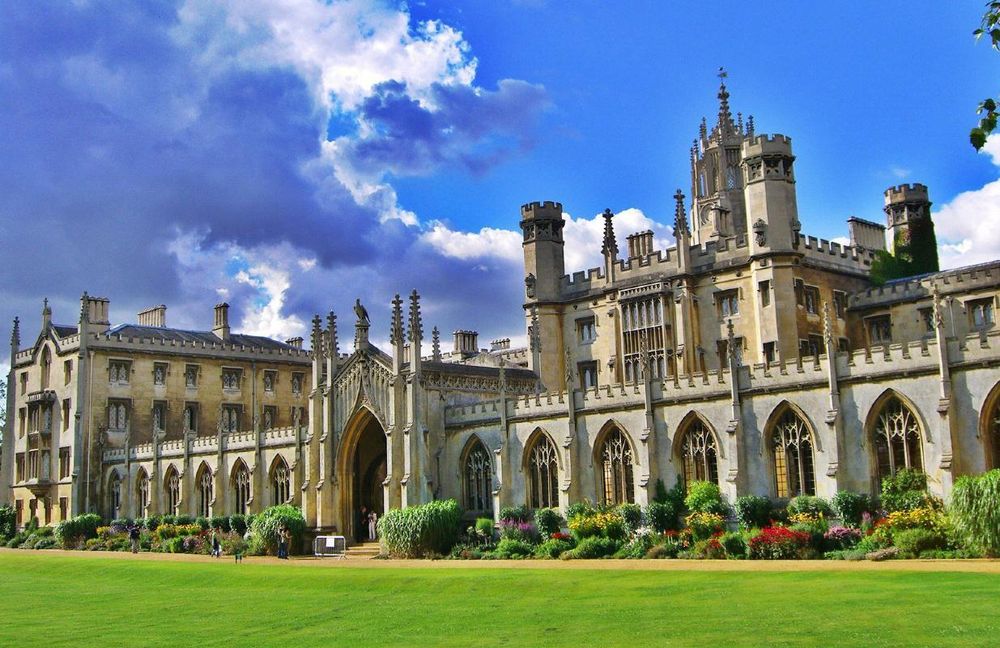Cambridge is a city that is located within 80 kilometres of London, and has many villages situated near it. It is both the heartland of the technologically advanced Silicon Fen centre, and the administrative capital of the county of Cambridgeshire. Amongst the architectural highlights of this famous city, are the buildings known as St. John’s College Chapel Tower, and the chimney of Addenbrookes’s hospital, which is located at the southernmost point of the city.
No visitor to Cambridge can ignore the fabulous University building, home to the internationally recognised Cavendish Laboratory, the King’s College Chapel, and of course the magnificent University Library. Tourists should take great care not to confuse this bustling city with the town of Cambridge, located in the county of Gloucestershire. Just over 20% of the city’s bustling 108,863 inhabitants are students, says a 2001 census. Cambridge, a brief history Cambridge is a dream location for anthropologists, archaeologists, and historians due to its eventful past. Beginning at the late bronze age circa 1000 BC, this city has been occupied. This is known because of the discovery of some 100 weapons used for hunting. A marauding tribe from Belgium is believed to have settled here during the Iron Age around 100 BC. Cambridge did not escape the Roman invasion in 43 AD, when the Emperor Claudius decided to make Britain part of his empire.
The area of Castle Hill, also used effectively by the Belgian tribe a century before them, was an ideal place to defend the local river. Cambridge was a crossing point for the Via Devana, an important route for the Romans which linked the northern garrisons with those down south in Essex. This settlement was probably called Durolipons and was to remain as an important area for the Romans until about 400 AD, when their empire started to crumble. Archaeologists discovered the remains of Saxon items in the Castle Hill area. They succeeded the Romans and used the area as a beneficial trade route across the difficult to traverse fenlands. However, citizens of the neighbouring town of Ely reported the demise of Cambridge, and by the 7th Century it ceased to be an important area for anyone. The oldest known piece of literature pertaining to the city was contained in an Anglo-Saxon Chronicle which named it Grantebrycge.
The Chronicle is the source of information for the next instalment of Cambridge history; the arrival of the Vikings in 875. Within three years they had the town ruled under Danelaw, the Viking code of law. Cambridge was to be one of the many towns that was to benefit from the Vikings’ frenetic trading efforts, which helped raise the importance of the town once again (note at this time it was still considered to be a town). Castle Hill ceased to be the town centre, which moved to Quayside on the opposite bank of the river. When the Vikings had ended their influence on the town, the Saxons returned to prominence briefly, building St. Benet Church in 1025. The fact that it still stands proudly today is a testament to the architectural skills of the Saxons. William the Conqueror was the next to build something important in the town. This he did in 1068, building a castle on Castle Hill, a mere two years after his conquest of England. Now under the control of the monarch, other buildings appeared, such as the well known Round Church. At this stage, Cambridge was known as either Grantabrige or Cantebrigge, and the river flowing through it was known as the Granta. The course of time has changed the name to its current form, and the local river is generally known as the Cam, to tie in with the new town name, though there are some who prefer the older Granta name. Incidentally, the Welsh name for the town is Caergrawnt, which has links with the name of a nearby town (Grantchester). The University refers to the town name in Latin as cantabrigiensis which means ‘of Cambridge’. University of Cambridge Its origins ironically derive from hostile relations with Oxford, still its arch-rival today. In 1209, a group of students fled from the tyrannical elements of Oxford and decided to form a University there. The oldest part of the University that still exists today, Peterhouse, was built in 1284. The aforementioned King’s College Chapel is well named, as numerous kings reigned and died during its construction. King Henry VI ordered it to be built around 1446, but it was only completed during the early part of the reign of King Henry VIII in 1515. Some 80 years after Gutenberg’s printing press, Cambridge University Press came into existence, procuring a printing licence in 1534. Clean drinking water was introduced to the town in 1610, thanks to Hobson’s Conduit, a specific project pertaining to clean water in the area. Addenbrooke’s Hospital which towers over other buildings in the area was built in 1766. Apparently, nefarious elements within the town decreed that the railway station for the area be built as far away from the University as possible in 1845, so as to remove the possibility of defecting to London. Despite its many magnificent buildings and its world-famous University, Cambridge did not receive city status until 1951. Modern Day Cambridge The centre of the city is adorned by Great St. Mary’s Church. Nowadays, Cambridge is home to a multitude of technologically orientated businesses and is an area of great scientific development, which leads to its sometimes used nickname; Silicon Fen. Computer companies like Sinclair and Acorn Computers are based here. The tremendous reputation of the University precedes it, leading to Anglia Ruskin University joining up, with other bodies following suit. Included in the wonderful array of University facilities are a whole host of museums that are open to the public.












